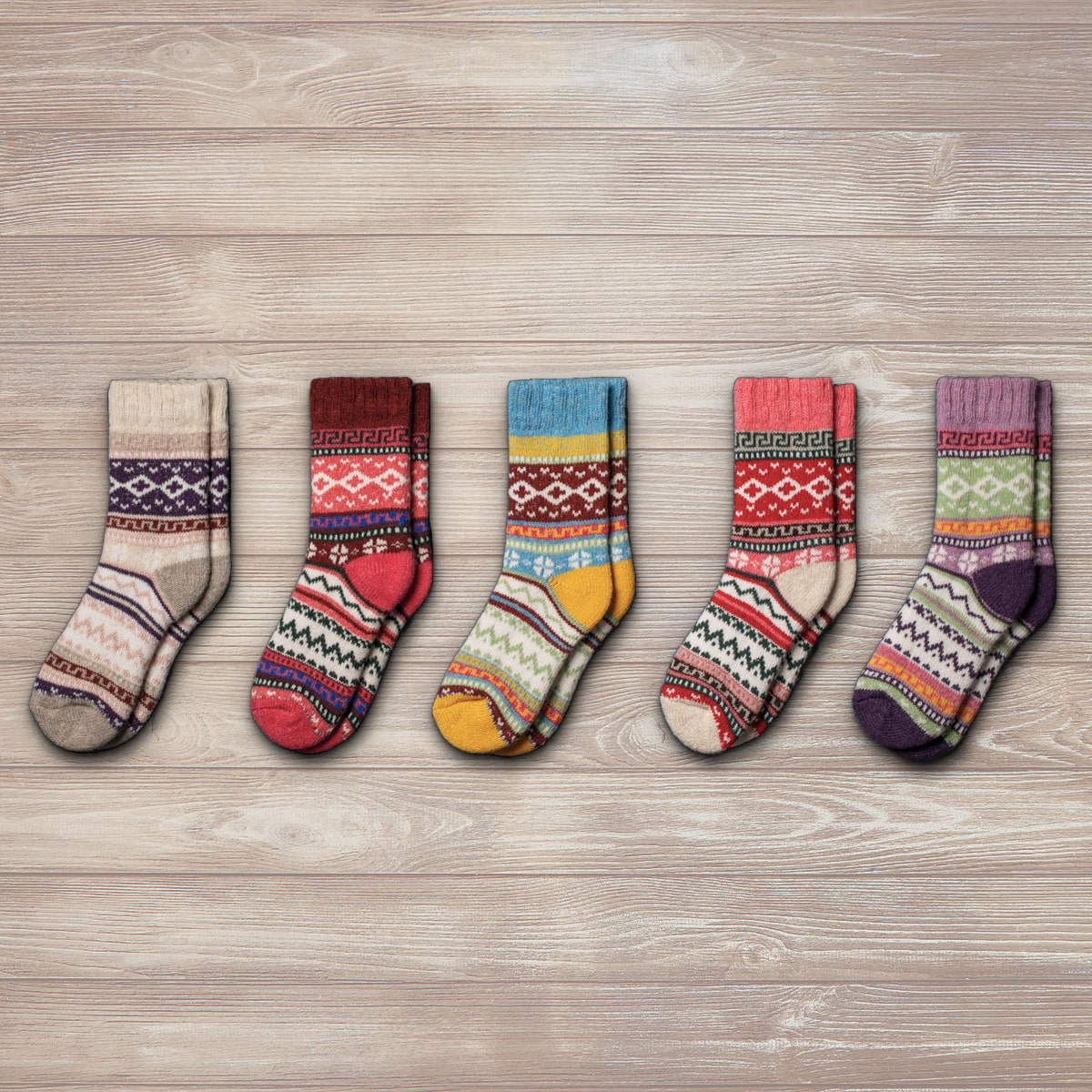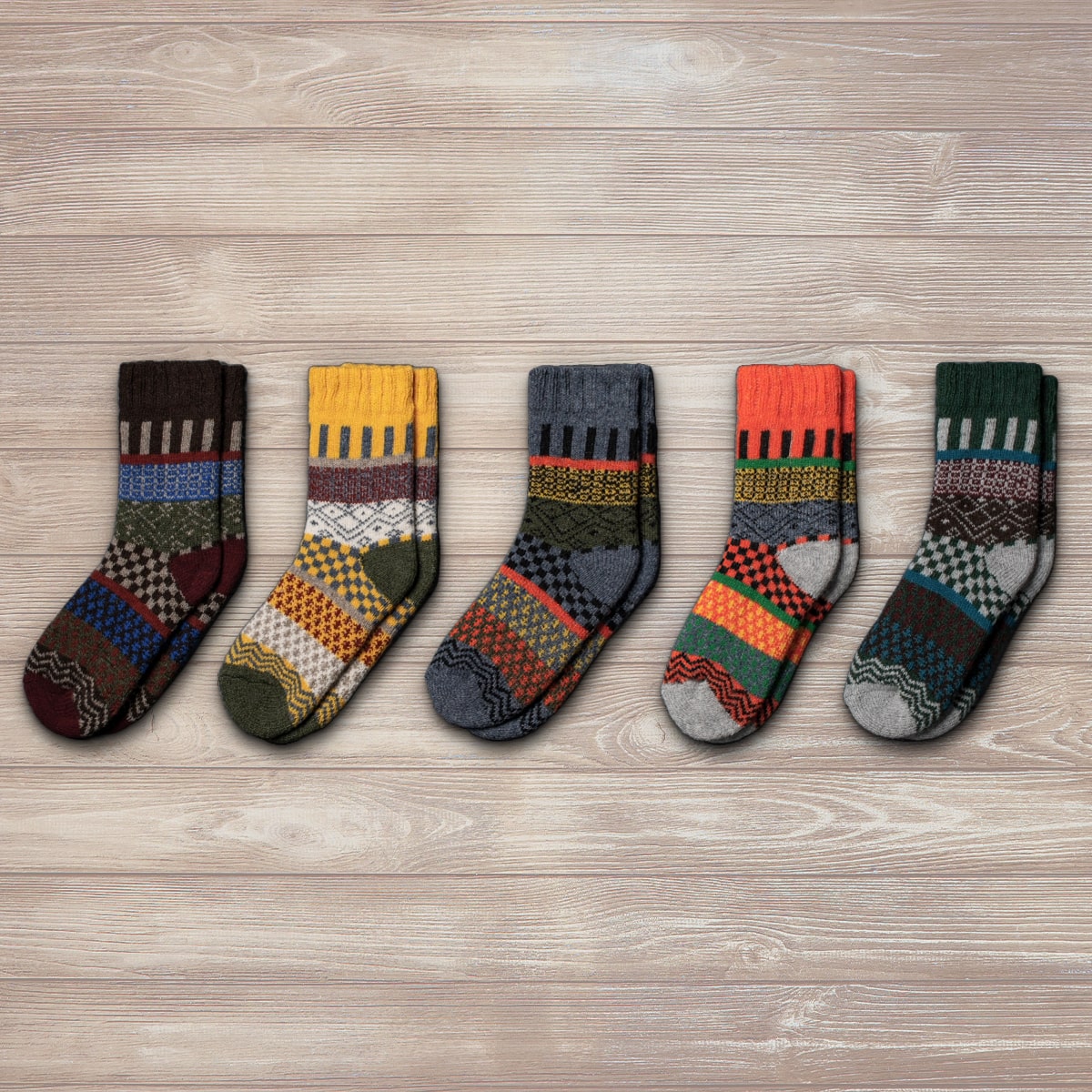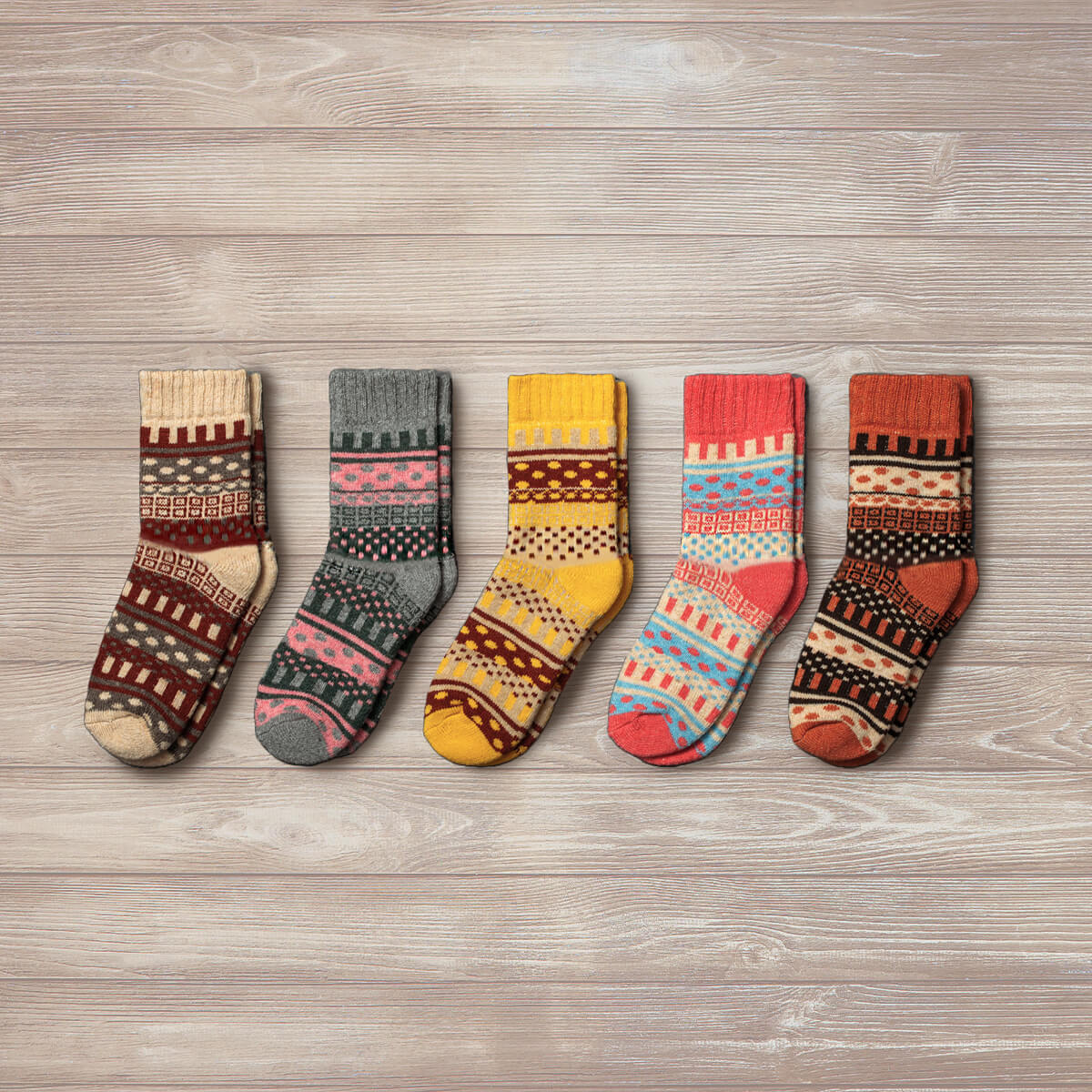Your Cart is Empty

Are wool socks good for summer?
8 min read
This article explores the advantages of wearing Merino wool socks during summer. Contrary to common belief, wool, particularly Merino, excels in hot weather thanks to its scientifically backed moisture-wicking, thermoregulating, and antibacterial properties. It also compares Merino wool with cotton, demonstrating why Merino is superior for sweat control, blister prevention, and comfort. The Nordic Socks Activity Collection is featured as an example of high-performance socks blending wool with supportive features like ventilation mesh, arch support, and variable thicknesses for different activity levels and climates.
Wool as a summer material raises some eyebrows. But here are all the ways you can employ it in everyday wear at 30 degrees or more.
Are Wool Socks Actually Good for Summer Weather?
Wool socks are the perfect summer material. With one caveat: it is equally important to find the best designs for the season.
To be ahead of the weather, we advise you to choose
- Thin materials
- Durable designs
- Flowy and breathable cuts
These rules apply to all woolen garments but to socks in particular. Feeling comfortable on your feet is a must during such active times. Wool in general, and Merino wool especially, is scientifically proven to protect you from heat and sweat.

How Merino Wool Fibers Keep Your Feet Cool in Hot Weather
Merino wool fibers capture cool and dry air. Another reason why this material is beloved is that it's hydrophilic. It absorbs excess water. Moreover, it can expand up to 30% in size with moisture. Thus, it protects your feet from direct contact with sweat. Studies show Merino wool can absorb moisture vapor up to 35% of its own weight, outperforming synthetics like polyester, which absorb less than 1%.
Excess sweating is summer's most unpleasant aspect. Did you know that it's also one of the most dangerous? Multiple podiatric health issues are caused or worsened by sweaty feet. Among those, athlete's foot is a fungal infection that can take months or years to treat. Athlete’s foot thrives in moist, warm environments, and studies confirm that moisture-wicking socks like Merino wool can significantly reduce the likelihood of fungal growth.
Bunions are foot deformations, which are often painful and a hindrance. Although the causes of the affliction are up for debate, excess humidity exacerbates it. Research has shown that humid environments increase foot swelling and skin friction, both of which can worsen bunion symptoms and discomfort.
Blistering is a common injury in the summer, particularly because of extreme friction and moisture. You can stay ahead of this seemingly inevitable condition by wearing soft and light footwear, as well as high-quality socks.
The Science Behind Wool's Natural Temperature Regulation
Temperature regulation is Merino wool's second superpower, in addition to its moisture-wicking properties.
This thermoregulation is made possible by the crimped structure of Merino wool fibers, which trap insulating air and create a natural buffer against temperature extremes. Additionally, when Merino wool absorbs moisture, it initiates a process called evaporative cooling—releasing heat as the moisture evaporates. At the same time, the absorption of water vapor generates a small amount of heat through a process called heat of sorption, which helps retain warmth in cold conditions. These dual thermal responses enable the body to maintain a stable core temperature in environments with fluctuating temperatures.
Comparing Wool and Cotton Socks in Warm Weather Performance
Wool and cotton are the top two summer materials, but cotton is more suitable for mild heat.
Both fabrics boast moisture-wicking properties, but cotton is slightly less adept at keeping you dry. Otherwise, we recommend using cotton-based socks in temperature-controlled environments. For example, your office or the gym.
Wool ups the ante on thermoregulation, so even the hottest and most humid days get their match.
Still, you need to be mindful of design.
The properties of this versatile fabric can be enhanced for both cold and hot seasons. We have prepared a guide to help you choose the best summery sock design.
Are There Wool Socks Specifically Designed for Summer?
Summer wool socks exist, and they primarily target active people. However, they are equally sought after by those who prioritize comfort above all else.

Your Feet Deserve These Summer-Ready Performance Socks
Activity socks have never been so versatile. If you enjoy an intense lifestyle, you know that looks and functionality are both essential.
For instance, Nordic Socks' Activity Collection enhances high-compression areas like your ankles. It does so without having the full-on compression sock design. The socks in this collection are also great choices for your mood and aesthetic.
Plus, they have several performance-enhancing traits, including:
- Ventilation meshes
- Seamless toes and reinforced heels
- Ankle support
- Arch support
These qualities work perfectly for sporty folks and for those with a high sensitivity to heat. You will also enjoy running errands or taking part in summer's many, many social occasions.
The high temperatures are a blessing and a curse for athletic people. They encourage you to go out, but they can also become excessive and counterproductive easily.
To stay ahead of the heat, follow this advice:
- Train in the morning or evening
- Wear breathable gear
- Use sunscreen
- Cover your head
- Hydrate conscientiously
And, last but not least, wear appropriately thick or thin socks for the occasion!
Thick & Thin Options
Thickness plays a critical role not just in comfort but also in performance and injury prevention. Thinner socks provide a closer, more responsive feel in snug athletic shoes, helping improve traction and reducing overheating during fast-paced activities. Thicker socks, in contrast, offer superior cushioning against impact and pressure, making them ideal for uneven ground and extended wear. They also act as an additional insulation layer, helping your feet adapt to cooler temperatures in early mornings or shaded trails.
With Activity Socks, you get to choose between varying thickness levels and lengths.
The thin socks are perfect for July and August when heat and humidity reach their peak. You can go thicker when the season starts changing and days get shorter.
The level of intensity is also important when making a choice. Although both thickness versions are lightweight, sports like running or aerobics are a better match for thin socks. Hikes, on the other hand, require the protection of a thicker pair. When you hike, you are subject to significant temperature changes and rugged terrain. As such, it's better to be safe and moderately warm.
Socks Designed For an Active Lifestyle
What makes Activity socks perfect for intense sports? The key factor is the material blend of Merino wool and stretchy, durable fabrics. We know that going for 100% wool sounds like the finest choice; however, there are more benefits to blending textiles.
Merino is a remarkably fine fiber, but it may become brittle if it's not adequately enforced. Blends fix this problem. The thermoregulation and moisture-wicking properties are doubled by high resistance to impact and shape memory.
The same materials are used to protect sensitive areas, such as your toes and heels.
Another benefit of Activity Socks is the focus on proper blood circulation. Compression points are exactly what it says on the tin: they compress areas of your foot enhancing blood flow. Good circulation is hard to achieve in hot summers. Thermal discomfort also comes with swollen feet, aches, and a general unpleasant feeling. To prevent your feet from swelling painfully, hydration is a crucial step, but so is wearing socks that keep you ahead of extreme weather.
What Makes Merino Wool Socks Ideal for Hot Summer Days?
Merino wool is scientifically proven to help regulate body temperature, keeping you cool even on the hottest days. Renowned for its luxurious softness, this premium natural fiber offers unmatched comfort. It’s also naturally antibacterial and odor-resistant, helping to prevent unpleasant smells and health concerns associated with excessive sweating—making it an ideal choice for active, warm-weather wear.

Moisture Management: How Merino Wool Keeps Your Feet Dry
Merino wool is the top material in moisture-wicking. This superior moisture management is due to Merino wool's complex fiber structure, which can absorb moisture vapor from sweat before it turns into liquid, storing it within the fiber without feeling damp. Merino wool can absorb up to 35% of its weight in moisture while still feeling dry to the touch. This not only keeps your feet comfortable but also helps maintain a stable microclimate inside your shoes. Even when the July sun makes you feel soaked, your feet will be exempt from the wet feeling.
Moreover, the antibacterial properties of the fiber make it a great odor-repellent. So, you will not only stay dry but fresh-smelling, too.
Lightweight Merino Options Designed for Summer Months
If you think that wool socks for summer are not the best choice, think again. The supple Merino will give you the best protection against the elements. It will do so without weighing you down or feeling bulky.
If you want to go as light as possible, opt for the thin and low-cut Activity Socks. You will feel as if you are wearing nothing at all with all the benefits of woolen socks included.
Going for thin socks also gives you more stylistic freedom. You can match your Nordics with loafers, running shoes, even ballerinas, or, for the boldest fashionistas, Crocs.
Odor Resistance Benefits of Wearing Merino Wool in Summer
Odor control goes to the next level with Merino. The material is both hypoallergenic and antibacterial. As a result, you will stay comfortable and exempt from unpleasant smells all day long, regardless of the weather.
Not to mention, your feet will be healthier than ever.
How Do Merino Wool Socks Prevent Blisters During Summer Activities?
Merino wool wicks away moisture, which is the leading cause of blistering. These common injuries are caused by excess sweat, uncomfortable footwear, and friction. The breathable material, enforced with ventilation meshes, makes the best shield against moisture. Moreover, Activity Socks' heel enforcements keep these sensitive areas safe from injury.

The Friction-Reducing Properties of Merino Fibers
Merino fiber is exceptionally fine and supple, avoiding the coarse texture typically associated with traditional wool. This softness makes it ideal for sensitive skin and extended wear. But don’t be misled by its gentle feel, Merino delivers impressive adherence and impact absorption, particularly when engineered into performance-driven activity socks. Its elasticity and natural resilience help maintain a snug fit, preventing bunching and reducing the risk of blisters.
Can You Wear Wool Socks for Summer Running and Hiking?
Wool socks will not overheat even if you do your damnedest. Their moisture-wicking abilities are strong enough to overcome even afflictions like hyperhidrosis or long days of strenuous exercise.
For hikers, especially those who prefer multi-day socks, Merino also stands out as the perfect sock to wear two days in a row. As it is comfortably dry and odor-free for an entire day, you will have no problem getting back on the trail after a night spent camping.

Best Merino Wool Running Socks for Hot Weather Performance
For a high-intensity sport like running, it is best to go with lightweight and breathable socks. Nordic's Activity collection is ideal for the task. The most recommendable combo is thin and regular crew cut. This regular length goes over your ankle and protects your feet and lower calves.
The hottest days might make you go for low-cut options. Remember to hydrate properly and give adequate protection to all your body parts on these scorching days.
How Merino Wool Supports Feet During Intense Summer Activities
Any summer activity is easier with Merino wool socks because they protect you from high impacts and unpleasant sweating.
The fibre's properties, coupled with characteristics that you would find in compression socks, provide you with
- Superior blood circulation
- Breathability for your feet
- Cool dryness
- Arch and heel support
Frequently Asked Questions

Are wool socks better than cotton for summer?
Yes, wool socks, especially those made from Merino wool, are better than cotton for summer. Merino wool offers natural thermoregulation, keeping your feet cool in hot weather and warm in cooler conditions. Unlike cotton, which traps heat and moisture, Merino wool effectively manages temperature fluctuations and moisture levels.
Are wool socks good for sweaty feet?
Merino wool are excellent for sweaty feet. They naturally wick moisture away from the skin, absorb up to 35% of their weight in sweat without feeling damp, and dry quickly. Plus, their antibacterial properties help reduce odor and prevent issues like athlete’s foot, keeping your feet dry, fresh, and healthy.
Get Exclusive offers
Join our email list and get exclusive offers and 10% off on first order.
Recent Articles
-
 Are wool socks good for summer? July 29, 2025
Are wool socks good for summer? July 29, 2025 -
 The Cultural Inspiration Behind Our Sock Designs May 27, 2025
The Cultural Inspiration Behind Our Sock Designs May 27, 2025 -
 How to Care for Cotton Socks May 27, 2025
How to Care for Cotton Socks May 27, 2025 -
 Wool vs Cotton Socks for Hiking: Which is the Best Material for Hiking Socks? April 11, 2025
Wool vs Cotton Socks for Hiking: Which is the Best Material for Hiking Socks? April 11, 2025 -
 Foot Health: How Nordic Wool Socks Support Your Wellbeing February 18, 2025
Foot Health: How Nordic Wool Socks Support Your Wellbeing February 18, 2025
Enjoying this content?
Sign up to get notification about new articles, special offers and new products.
news & Updates
Get the newsletter to receive direct information about offers and new products.
Where are we shipping to?
Purchase from your country’s website.
It’s the fastest way to pamper your feet with comfy socks.





























































































